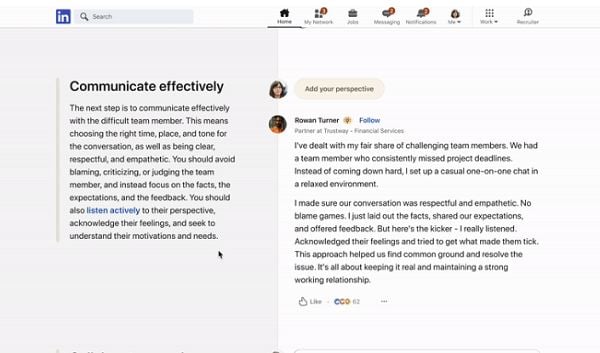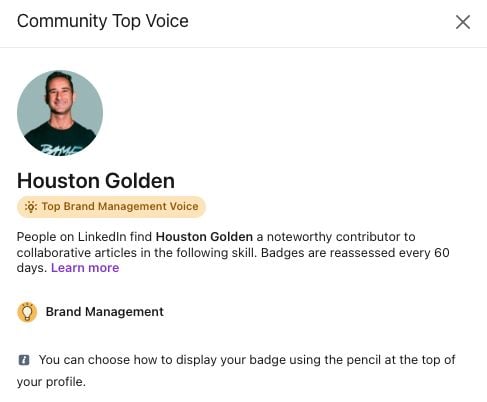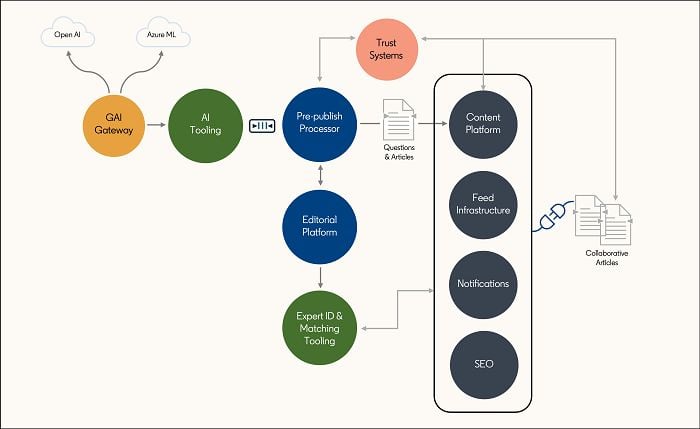There’s been a lot of focus on LinkedIn’s Collaborative Articles of late, which LinkedIn recently reported have now become its fastest-growing traffic driver, as more of its members look to take part in these expert insight posts.
Collaborative Articles, which LinkedIn first launched back in back in March, use AI-generated prompts as a starting point for a post, and then call on specific LinkedIn users to share their expertise on the chosen topic.

The idea is that this will enable LinkedIn to better harness the expertise of users in the app, while it also comes with the added benefit of rewarding consistent Collaborative Article contributors with a profile badge that highlights their expertise.

To be clear, you don’t necessarily have to be an expert in any field to get this recognition, you just need to contribute to Collaborative Articles in the app. But you can also see why users would want this type of recognition, which could help to make their profile stand out.
So it makes sense why people would be keen to contribute, but do other users actually want to read these multi-perspective posts?
According to LinkedIn, they do.
In a new post, which outlines the engineering considerations that went into creating the Collaborative Articles process, LinkedIn has reported a 74% month-over-month increase in the number of Collaborative Articles read by LinkedIn users.
As per LinkedIn:
“It’s been just over six months since the launch of collaborative articles. We’ve celebrated our one-millionth expert contribution, and it’s clear that more and more members are turning to expert answers as their guidebook for work-related challenges.”
Personally, I would say that the reading experience of Collaborative Articles is not that great, with a range of helpful, and less-so, quotes from an array of users in the app. But evidently, LinkedIn is seeing more interest.
Whether that’s because users are seeking them out, or because LinkedIn’s looking to highlight Collaborative Articles in people’s feeds is another question. But the stats don’t lie, which could mean that there is definitive value to contributing to Collaborative Articles in the app, aside from gaining a “Top Contributor” badge.
The full post, on the LinkedIn Engineering blog, looks at the various considerations that LinkedIn has factored into the creation of the Collaborative Articles process, including how the system chooses which experts to prompt for their input in each post.

As per LinkedIn:
“An integral part of this infrastructure was recognizing real experts, which was harder than it seemed. Though we’re equipped with many direct and indirect signals to gauge a member’s skill proficiency, there’s also a lot of noise. Some of these signals have low coverage, while others have low precision. Ultimately, signals that worked reasonably were a combination of explicit skills – skills on profiles, skill endorsements from others, recent job titles – and implicit skills, which are inferred based on recent hires for job postings or a member’s self-evaluation during job applications.”
The process also factors in a users’ likelihood of making an original contribution based on their LinkedIn posting history, so there is a level of qualification for contributors, which should ensure that only active, expert members are asked to take part.
These are some interesting notes, which, again, could prompt you to reconsider your engagement with the format, and maybe seek out your own “Top Voice” badge.
You can read LinkedIn’s full overview of the Collaborative Article process here.



